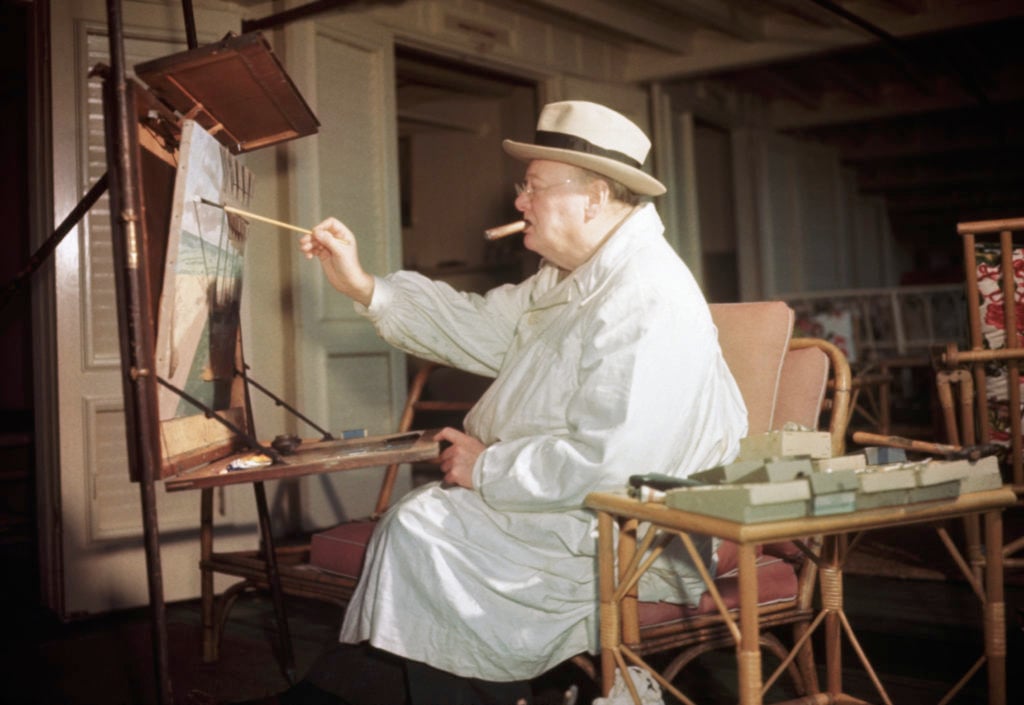Every Monday morning, Artnet News brings you The Gray Market. The column decodes important stories from the previous week—and offers unparalleled insight into the inner workings of the art industry in the process.
This week, a reminder that the art-market generation gap isn’t as wide as many like to believe…
WE SHALL FIGHT IN THE SALESROOMS, WE SHALL FIGHT WITH THE PADDLES
Last Monday, three canvases by the late British prime minister and recreational painter Winston Churchill sold for a combined $15.7 million at Christie’s Modern British Art evening sale. After years of Boomers scolding younger buyers for perpetuating the auction success of artists like KAWS and Banksy, the prices paid for Churchill’s work prove that extracurricular fame can seduce “experienced” buyers into inflating an artist’s value just as wantonly as their juniors.
Among the trio of Churchill paintings to change hands at the house last week, the most hotly pursued was Tower of the Koutoubia Mosque (1943), a pastel-hued landscape depicting Morocco’s largest house of Islamic worship. Originally given to president Franklin D. Roosevelt after a pivotal wartime meeting between the Allied leaders in Casablanca, the work later landed in the collection of actor and director Angelina Jolie, who consigned it to Christie’s years after (maybe) receiving it as a gift from then-beau Brad Pitt.
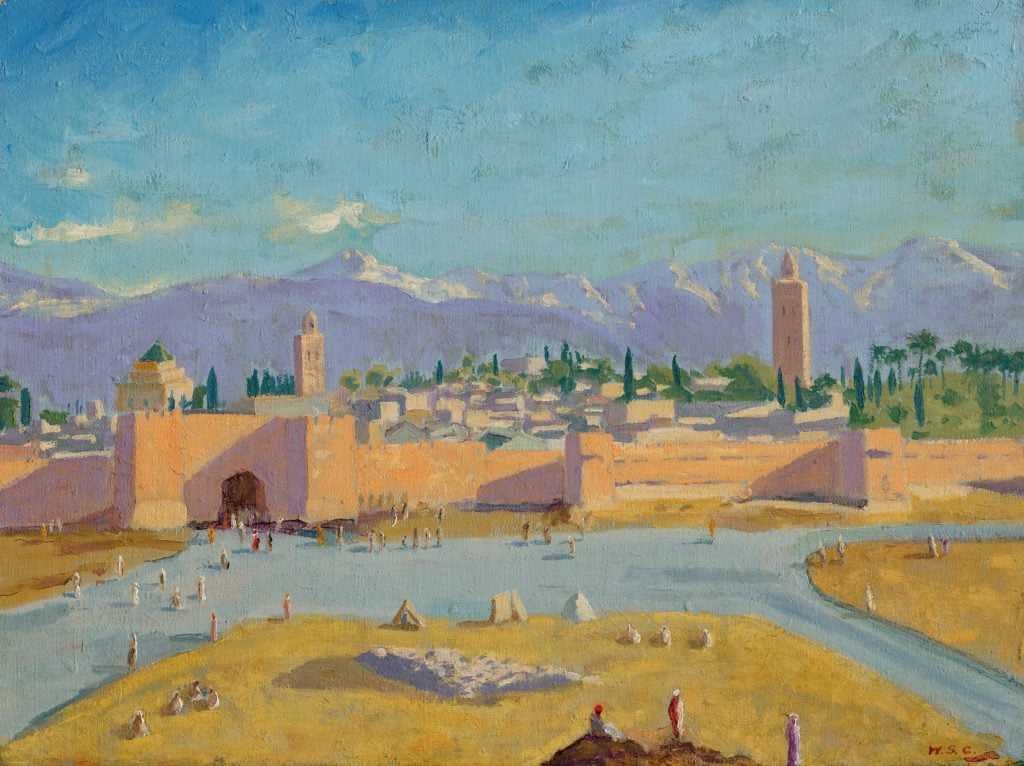
Sir Winston Churchill, Tower of the Koutoubia Mosque(1943). ©Christie’s Images Limited 2021.
According to my colleague Naomi Rea, “The historic provenance and much-buzzed-about Hollywood connection attracted heated bidding from 10 different parties, who duked it out for nine minutes before [Tower of the Koutoubia Mosque] hammered at £7 million ($9.7 million), nearly three times its high presale estimate.” Premiums lifted the final price to £8.3 million ($11.6 million), a new auction record for Churchill.
The prime minister’s two other available landscapes each more than tripled Christie’s rosiest expectation: Scene at Marrakech (1935) sold for £1.9 million ($2.6 million), and St. Paul’s Churchyard (1927) reached £1.1 million ($1.5 million). Melanie Gerlis reported in the Financial Times that all three Churchill paintings were acquired by the same phone bidder; Rea noted this anonymous victor was bidding through Belgian specialist Olivier Camu, though Christie’s global president Jussi Pylkkänen “said the buyer was not Belgian.”
Seeing those beefy final prices alongside their considerably leaner presale estimates certainly gives us some indication that no one quite saw this performance coming from Churchill’s paintings. But we still can’t grasp just how outrageous their success was—or what we should take away from it—until we step back from last Monday’s evening sale and take a longer view of auction history.
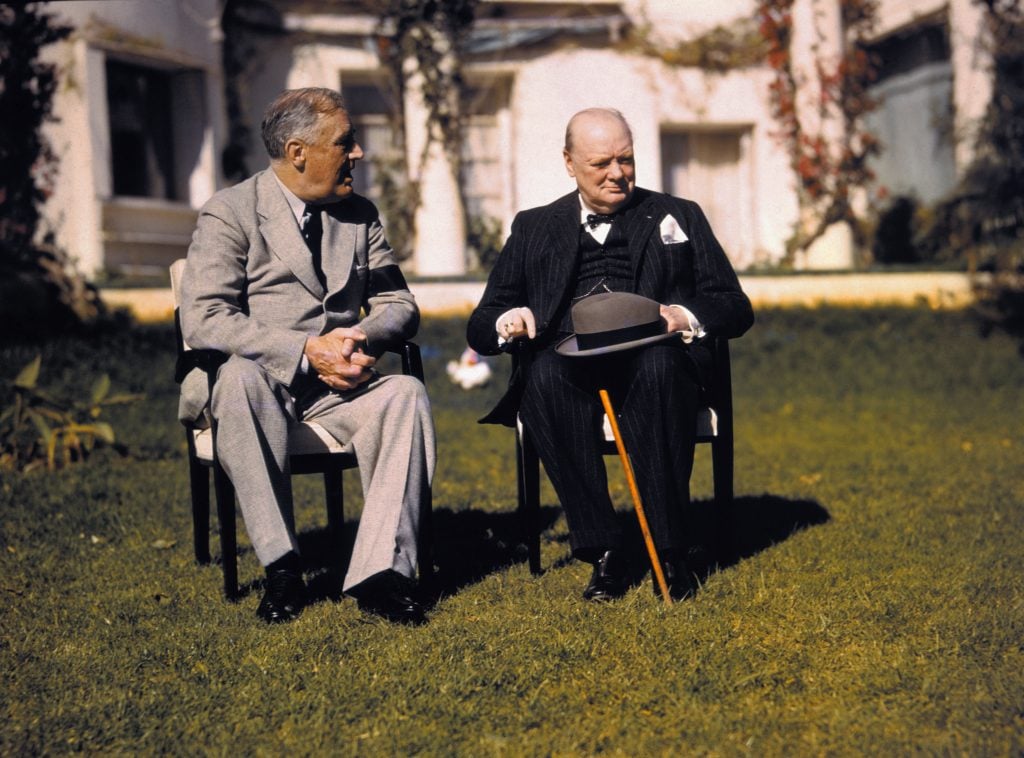
President Franklin D. Roosevelt and Prime Minister Winston Churchill talk on the lawn of the President’s villa during the Casablanca conference. Bettmann / Contributor via Getty Images.
“EVERYONE HAS HIS DAY, AND SOME DAYS LAST LONGER THAN OTHERS”
Let’s start by comparing Tower of the Koutoubia Mosque to the priciest works sold across genres in 2020. Since Churchill was born in 1874, the Artnet Price Database’s classification system would place him in the Impressionist & Modern category (which covers artists born from 1821 through 1910). Churchill’s $11.6 million record-setter cannot compete with the 10 top-selling pieces there, all of which went for at least $25.9 million including fees last year.
However, Tower of the Koutoubia Mosque easily eclipsed the most expensive work sold at auction in our ultra-contemporary category (consisting of artists born in or after 1975): Adrian Ghenie’s $7.1 million Lidless Eye (2016).
If we compare to the contemporary genre (artists born from 1945 through 1974), Churchill’s Tower rose above the eighth-highest-selling work of 2020, Jean Michel-Basquiat’s Portrait of A-One A.K.A. King (1982), which fetched $11.5 million.
It also topped all but three European Old Master works traded publicly last year, falling just short of the roughly $11.7 million paid for Andrea Mantegna’s The Triumph of Alexandria.
So is Churchill’s blitz of the auction charts a historical anomaly? Yes and no.
It turns out the prime minister’s artworks have generated more than $187,000 at auction in all but two years since 1998. They have rung up more than $1 million in annual sales 12 times since 2005, including nearly $17.3 million in 2014 alone. After last Monday’s fireworks at Christie’s, Churchill is now responsible for more than $61 million in fine-art sales at auction in less than a quarter-century.
These results delight me. Why? Because Churchill’s rowdy performance under the gavel pretty clearly has almost nothing to do with artistic merit, and almost everything to do with exactly the kind of brand-drunk hypebeast activity that paternalistic, old-guard wealth loves to accuse younger buyers of falling victim to. It just so happens that the generational roles are reversed.
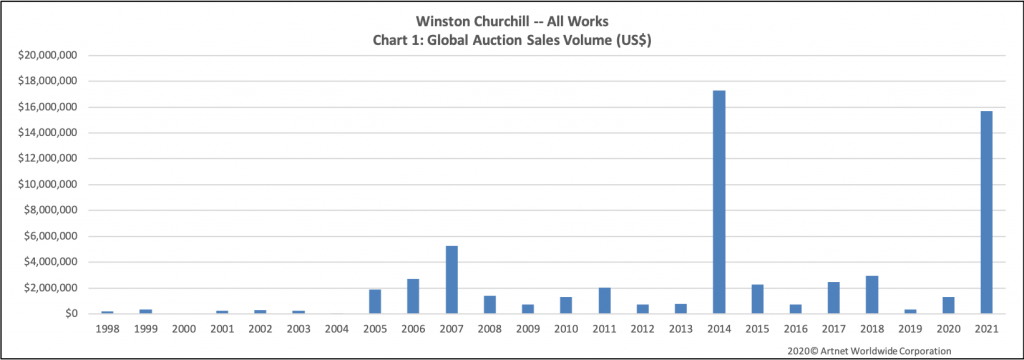
© Artnet Price Database 2021.
“WHAT IS ADEQUACY? ADEQUACY IS NO STANDARD AT ALL”
I don’t think it would be fair to dismiss Churchill’s paintings just because he was a politician by trade. (Certainly that hasn’t stopped respected critics from raining laurel wreaths on ex-President-turned-portraitist George W. Bush.) Yet the only institutions that have ever exhibited Churchill’s work appear to be university museums and historical societies. In fact, the curatorial establishment’s response to the statesman’s oeuvre has been downright savage at times, according to the International Churchill Society:
In 1958, the assistant director of the Pittsburgh Carnegie Institute declined the opportunity to exhibit Churchill’s painting by referring to one of his other ‘hobbies’: ‘I understand that Churchill is a terrific bricklayer too, but nobody is exhibiting bricks this season.’ The director of the Art Institute of Chicago was more brusque: ‘We have certain professional standards.’
Churchill himself seems to have agreed with this perspective, at least to a certain point. The International Churchill Society notes that its namesake “always insisted he painted for pleasure” and “was keen that his art should not be regarded as ‘ambitious’ and assessed as if it were so.”
It doesn’t sound like this was just false modesty presented for the public, either. Churchill’s great-grandson Duncan Sandys told Artsy in 2018, “He did it for fun; he didn’t take his paintings very seriously.”
Rather than creative vision or technical skill, then, it’s safe to conclude that the value of Churchill’s paintings derives from their status as personal memorabilia from a revered statesman (whose ghastly colonial policies toward India tend to be unduly glossed over).
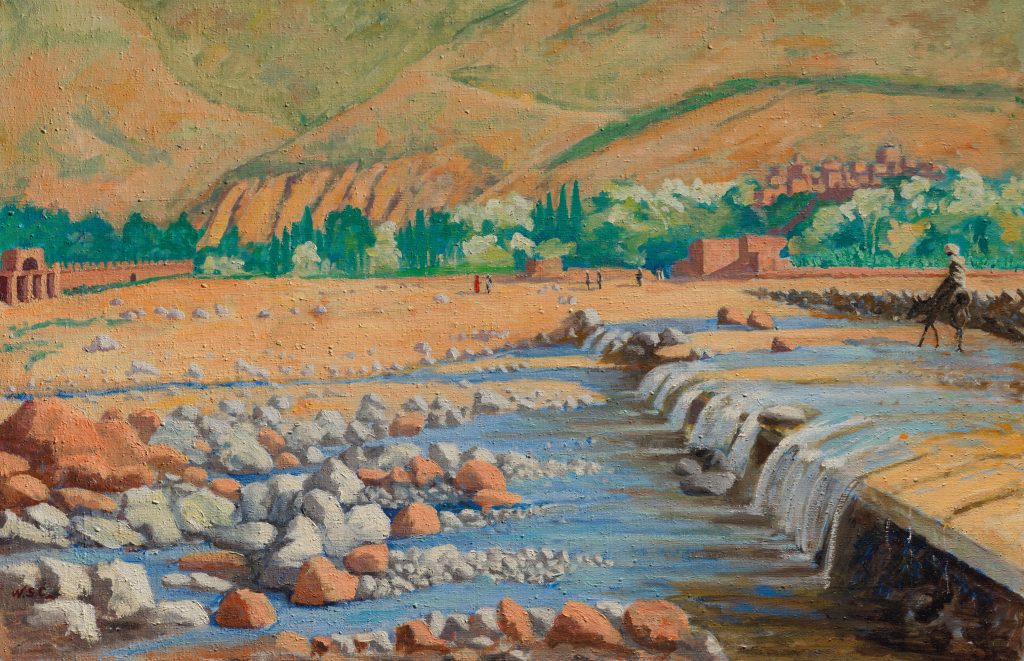
Sir Winston Churchill, Scene at Marrakech(1935). ©Christie’s Images Limited 2021.
In particular, an outsize portion of his legacy is staked to his pivotal role in the Allied Powers’ victory in World War II—a conflict that an international coalition of Boomers so relentlessly continues to mine for tradable souvenirs, cinematic/literary source material, and go-to analogies for seemingly every situation in modern life that it basically functions as their Marvel Universe.
(Related: If the buyer of the three Churchills at Christie’s last Monday is not a white man over the age of 50, I promise that, for the entire first year after I manage to get vaccinated, I will only leave my apartment wearing the floppy red shoes of a circus clown.)
No doubt the bidding for Churchill’s Tower of the Koutoubia Mosque received an extra boost from Angelina Jolie’s ownership of the painting. But his consistently strong performance at auction for nearly 25 years proves that political stardom can be as powerful in exploding perceptions of artistic value as pop-culture or social-media stardom. It just depends on the audience. We would all do well to hold onto that thought whenever the market plunges into a new frenzy—this year, next year, and as many years as we have left.
[Artnet News]
That’s it for this week. ‘Til next time, remember: We’re not so different from one another, especially when we most want to be.
